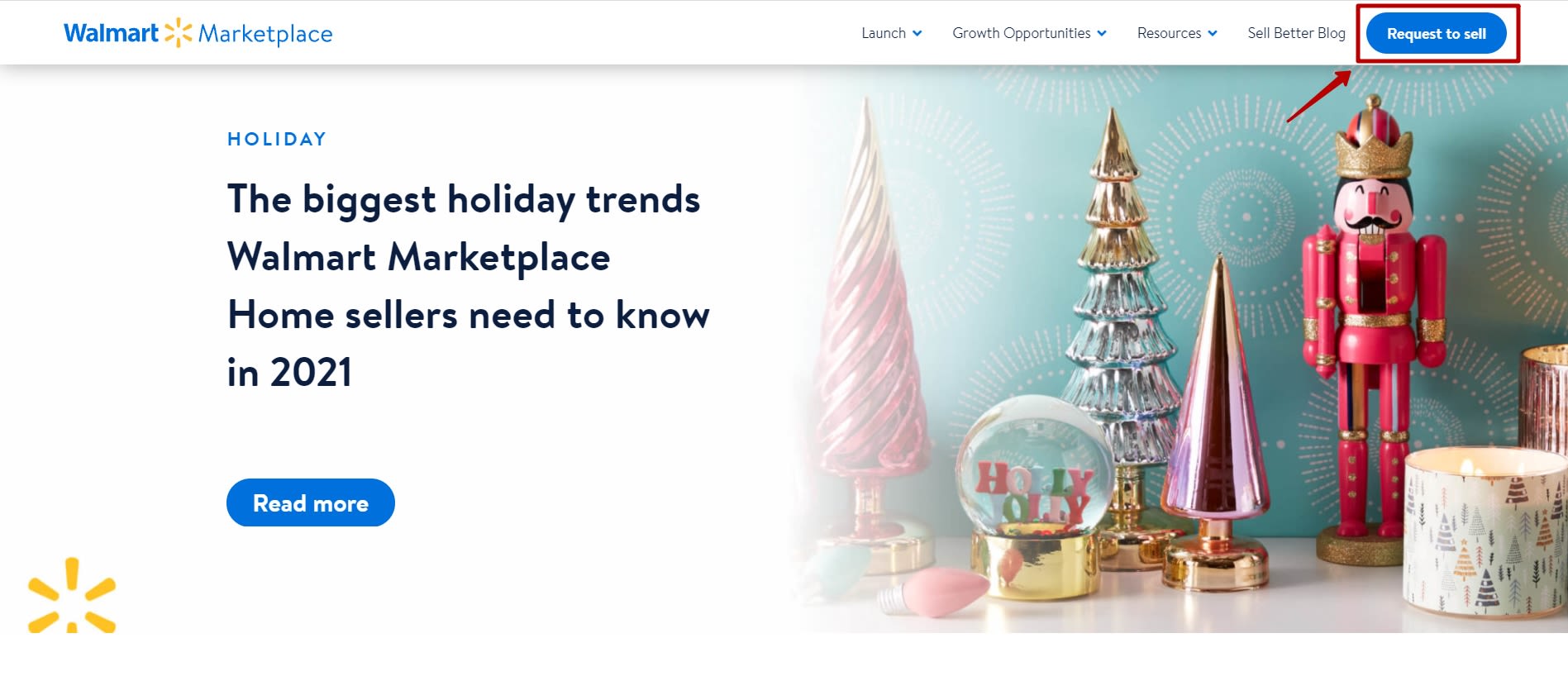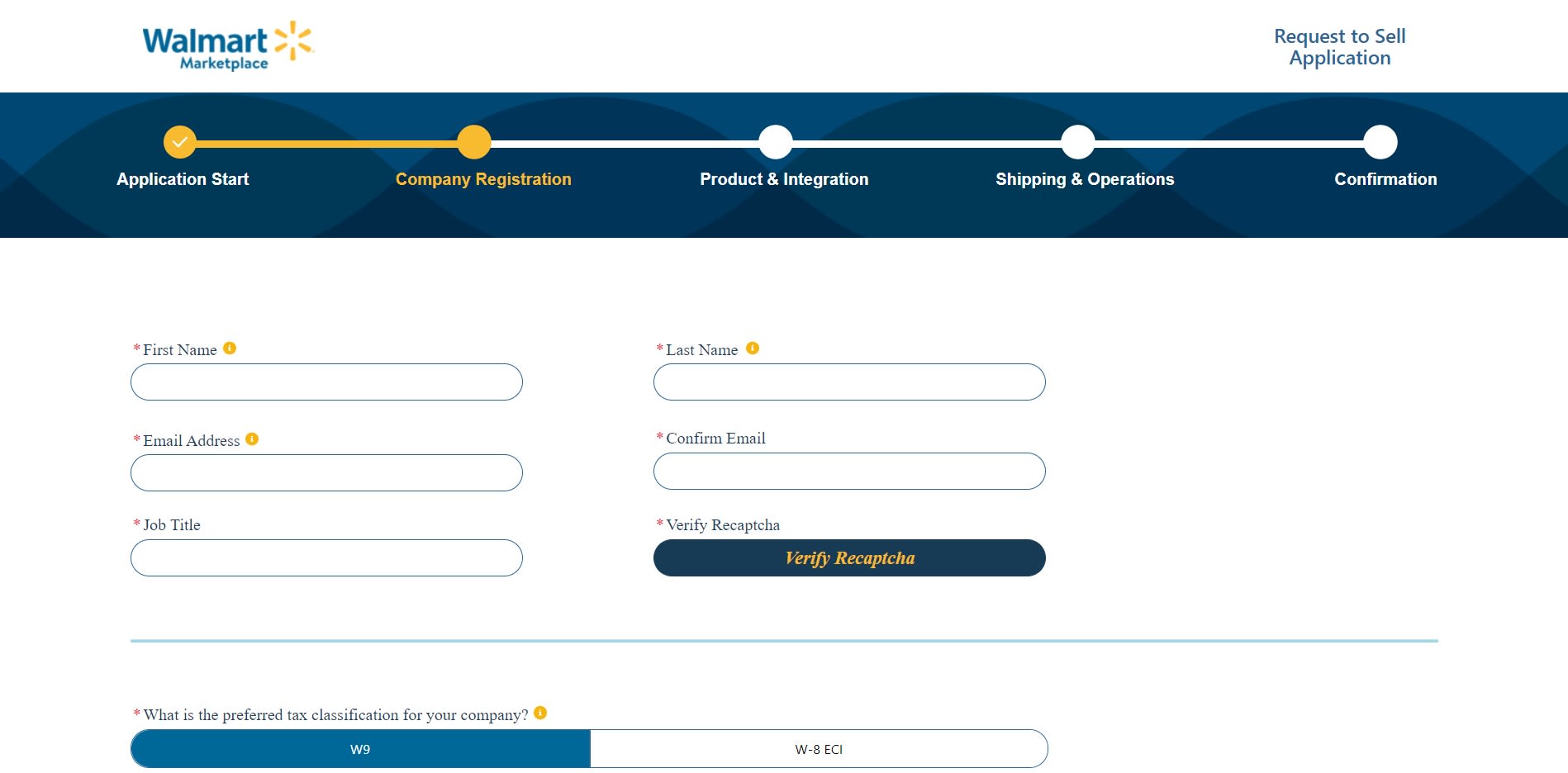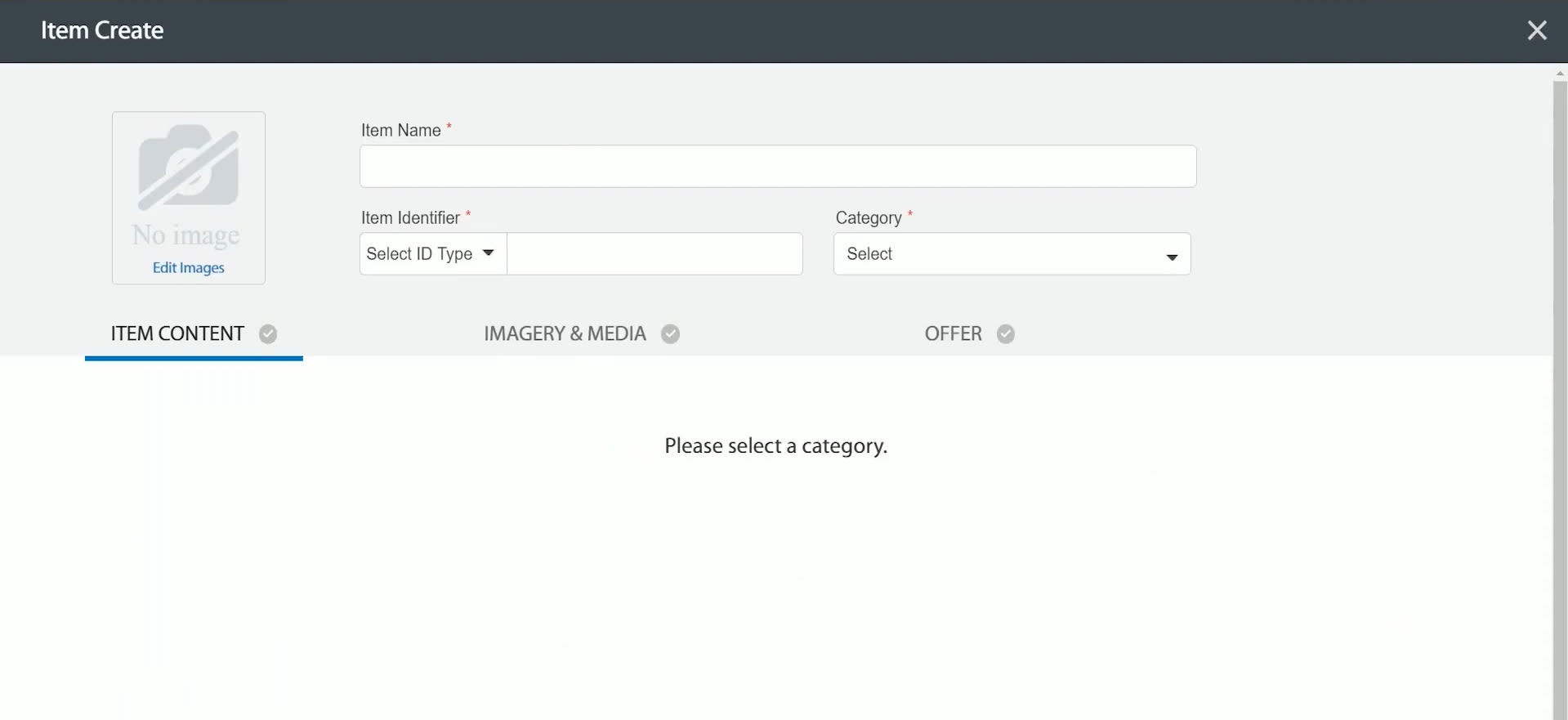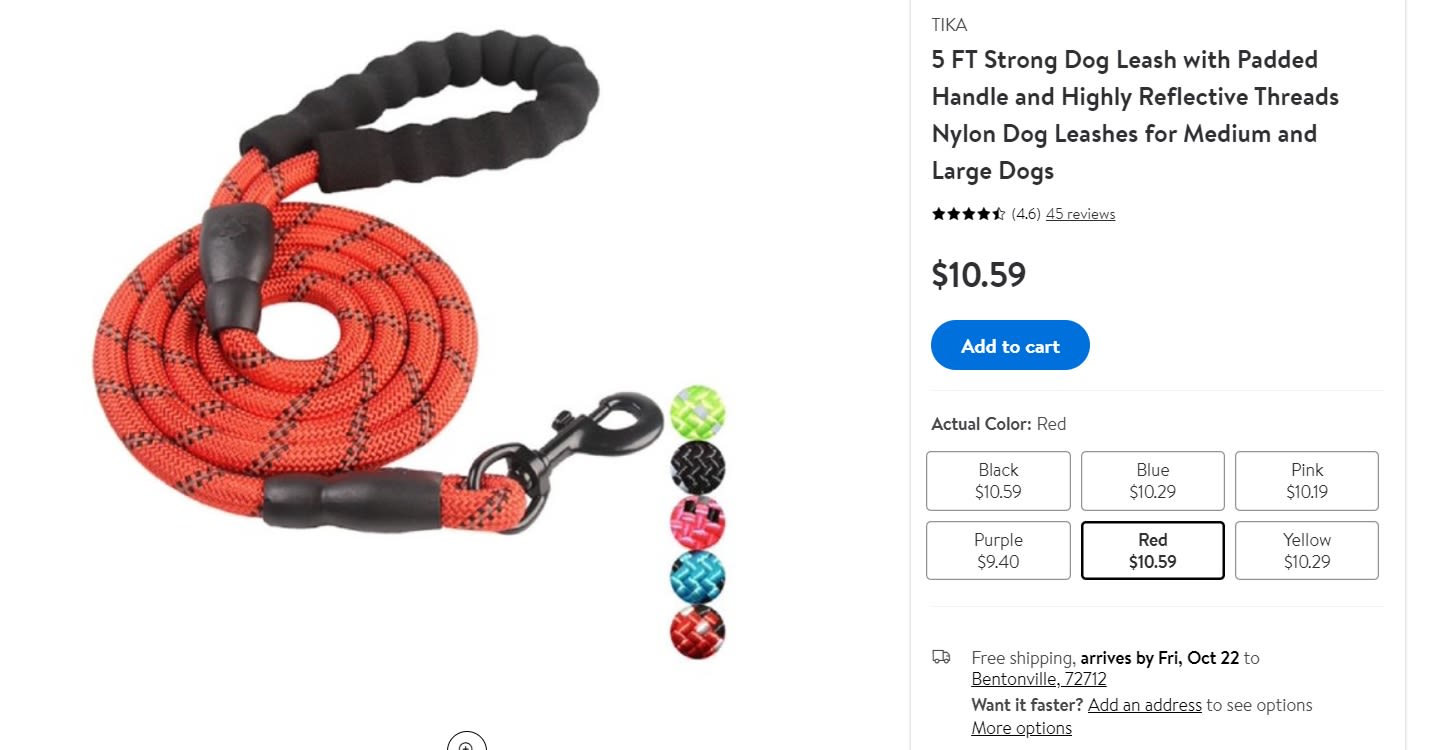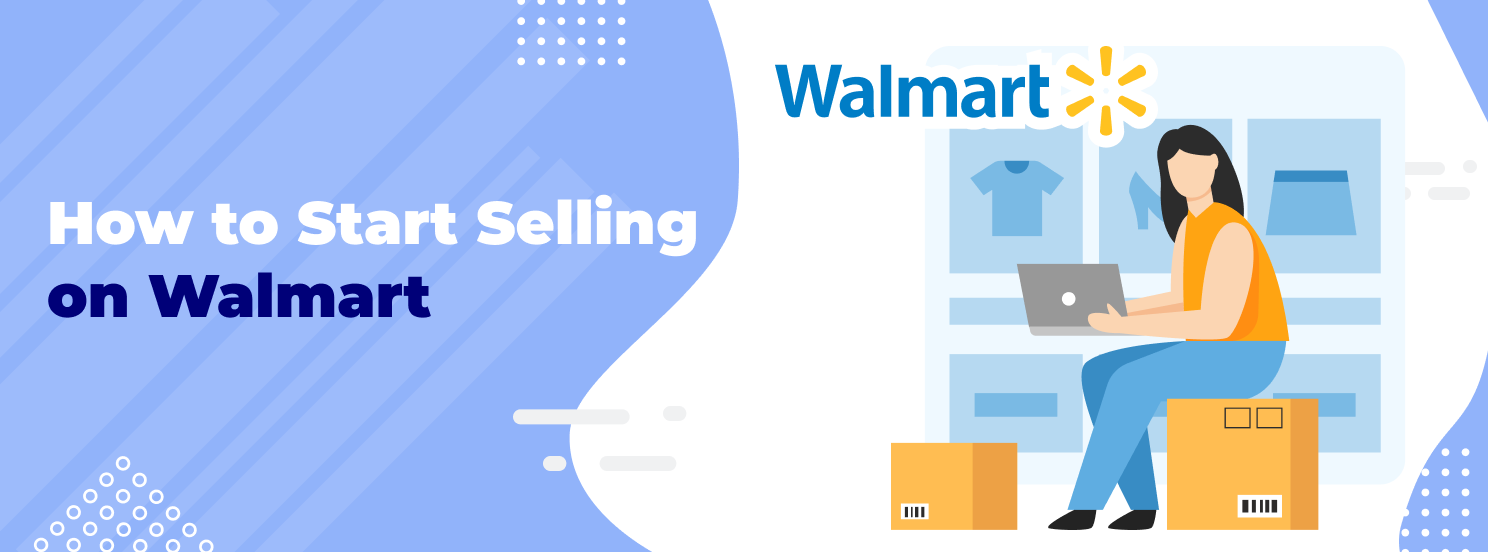
How to Start Selling on Walmart: All Necessary Steps
Walmart’s eCommerce business continues to grow as it has now passed eBay as the second-largest online marketplace in the United States (behind only Amazon). If you want to reach a new customer base, the marketplace can prove a viable sales channel.
Table of contents
In this post, you will learn how to sell on Walmart to bring more customers to your eCommerce business.
Benefits of Selling on Walmart
1. Limited Seller Fees
One of the biggest advantages of selling on Walmart is the limited amount of fees that you need to pay. As a Walmart seller, you only need to pay a referral fee once a customer buys a product. This fee varies based on the product category. We will examine these further a little later on.
2. Less Competition
Walmart is certainly a popular online marketplace with a good number of sellers. That said, the market is still growing and there is less competition when you sell on Walmart when compared to other marketplaces, particularly eBay. If you are able to get a few reviews for your products, you can quickly gain solid market share in many different niches.
3. Reach New Customers
If your business doesn’t currently sell products on Walmart, you can open your business up to a whole new customer base by listing your products on the marketplace. Many shoppers do a significant portion of their buying from a single marketplace and are not accessible on other websites.
How to Sell on Walmart: Step-by-Step Process
1. Apply for Seller Approval
The first step to selling on Walmart is to submit a seller application and get approved by Walmart. Unlike some other marketplaces, Walmart reviews seller applications with more scrutiny while limiting who is allowed to sell.
To get approved to sell on Walmart, you will need to explain the nature of your business, the type of products that you sell, the other marketplaces that you sell on, and other basic information.
After you apply, the approval process takes a few weeks to complete.
2. Register and Complete your Partner Profile
Once your application is approved, you will need to sign the Walmart Marketplace Program Retailer Agreement. You will then need to set up your Walmart Partner Profile. This is your seller account where you will define your general and business settings and list your products.
Some of the settings you will need to configure include:
Return policy.
Privacy policy.
Tax settings.
Company information.
Shipping profile.
Payout details.
3. Do Niche and Product Research
Before you list your items, you can ensure that it will be worth it to sell those items by performing niche and product research. This will allow you to understand the market you are entering and what customers look for in a good product.
When researching potential products, you should refine your selection to items well-suited to online marketplaces. These are small, lightweight products that are durable and easy to ship. By selling these types of products you can minimize your fulfillment fees and maximize your profit margins as a result.
Here are some places to find new ideas for products to sell on Walmart:
Pinterest.
Google Trends.
The best selling products on Walmart.
Products on other popular marketplaces.
After you find a few interesting product ideas from around the web, you’ll want to use a data analysis tool to review the market and sales data for that type of item. There aren’t many tools that provide data exclusively for Walmart sellers, however, there are plenty of Amazon research tools you can use to see what is performing well on the world’s most popular eCommerce marketplace.
For instance, with a research tool like AMZScout, you can quickly validate the viability of any Amazon product and how competitive the niche is. You can also see how a product is trending or if it is seasonal with more popularity at times like Black Friday to ensure it has consistent demand.
This information can help you find good items to sell on Walmart, as the items that do well on Amazon tend to have similar performances on other marketplaces.
4. Complete Item Setup
Next, you will need to begin adding your items to your product catalog. This will require you to populate all essential product data for each of your items. You will need to add images, descriptions, specifications, and price.
Depending on how many items you have, this could be a time-consuming process. Fortunately, Walmart integrates with popular eCommerce platforms like Shopify as well as other product management tools. If you use one of these tools you can automate the process of importing your products.
If you want to enhance your listing pages, Walmart offers a feature called Item Page Content. It is essentially their version of Amazon A+ Content. You can use the program to add custom layouts and designs to your listings and seller storefront. To use the Item Page Content feature you need to be using WFS to handle your orders.
5. Preview Items
Walmart lets you test your product listings before they go live. You’ll want to make use of this feature to make sure you have everything set up properly for each of your items. When you preview an item, you can see the listing content and the product’s price. If you are previewing a pre-existing product, the listing will display the price for the current buy box winner.
6. Launch Products
After you confirm that your product listings and descriptions are in order, the final step to begin selling on Walmart is to complete the launch process. You can do so by clicking the Ready to Launch button within your Partner Profile.
After you initiate the launch, a Walmart associate will review your profile, catalog, and completed onboarding steps.
If everything is in order, you will receive a launch acceptance email and your products will go live within 48 hours.
Selling on Walmart vs Amazon (FBA vs. WFS)
While Walmart is growing, Amazon remains the hands-down dominant eCommerce marketplace for third-party sellers. The marketplace has had so much success that many other websites are now striving to create a similar environment to attract sellers. As such, you can find several similarities between Amazon and other eCommerce marketplaces including Walmart.
Let’s take a closer look at how the two platforms compare:
1. Seller requirements
The first area to examine is the requirements that the platforms set for sellers.
Amazon
Amazon does not have strict requirements to sign up. There is an application process, but you only need to provide basic personal information and verify your identity. You do not need to worry about someone reviewing your application to ensure that you are qualified.
Once you are a seller, Amazon has performance requirements that you must meet. This includes:
Maintaining an order defect rate (ODR) under 1%.
Keeping your cancellation rate below 2.5% over a 7-day period.
Keeping your late Shipment Rate below 4%.
Walmart
Walmart has more stringent requirements for sellers looking to list items on their marketplace. To start, you can not sign up as an individual the same way you can on Amazon. If you want to sell on Amazon, you will need to provide a business tax ID with your application.
Additionally, the Walmart.com marketplace is only available to sellers with a US business address. With Amazon, there are ways for international sellers to list items on the US marketplace.
Beyond these requirements, the biggest difference between the two marketplaces is that Walmart reviews and declines applications while Amazon is more or less open for anyone that wants to sell.
Once you are an approved seller, Walmart has performance metrics that you will need to meet to keep your account active. This includes:
Keeping ODR at less than 2% over a 90-day period.
Keeping your on-time shipment rate above 99%.
Maintaining a Valid Tracking Rate above 99%.
Sellers that want to make money on Walmart, also need to be aware of Walmart’s Price Parity and Price Leadership rules. With the Price Parity Rule, you are not allowed to list your items for a lower price on another marketplace.
The Price Leadership Rule enforces the parity rule. Walmart will remove your listings if they find your items listed for lower prices on other markets. This includes prices from other sellers as well. Because of this, if you sell the same items as other sellers, you will need to actively monitor all their listings to ensure that your prices are always the lowest.
2. Account, sales, and fulfillment costs
Amazon
The account cost for Amazon sellers depends on your type of plan. Professional sellers need to pay a $39.99 monthly fee. Individual sellers don’t have to pay recurring fees but need to pay an extra sales fee on each order.
In addition to these fees, Amazon sellers must pay a referral fee on each sale. This can range from 8% to 15% of the order value.
You also need to pay fulfillment and storage fees if you use the FBA service. These fees vary depending on the size and weight of the products in your orders.
Walmart
There are no account or listing fees required to sell on Walmart. The only fees you need to pay are referral fees on each sale. These fees range between 6% and 20% of the sales value.
Like Amazon FBA, Walmart WFS, charges per item fulfillment fees as well as monthly storage fees for the items you keep in their warehouse.
3. Shipping and returns
Both marketplaces use their own logistics networks to minimize the delivery time for orders; Fulfillment by Amazon and Walmart Fulfillment Service. Sellers that use the services can benefit from fast two-day or even one-day shipping including Sunday deliveries for Amazon products. The markets will also handle the process for all returns.
If you do not want to use these fulfillment networks, both marketplaces let you fulfill your own orders. However, both have performance requirements for deliveries that you will need to uphold.
4. Support
Both Amazon and Walmart are great for providing support to customers. If you use the respective FBA and WFS fulfillment services, the markets will manage all customer service and return requests.
Both marketplaces also provide support for sellers. There are extensive help centers where you can learn how to set up your accounts and reach out for assistance if you need help with something.
Conclusion
Like Amazon growing from a simple website selling books, the Walmart marketplace has expanded to become a great sales channel for third-party sellers. Not everyone is eligible to sell on Walmart. But if you are, it can be worth it for your business to pursue.

